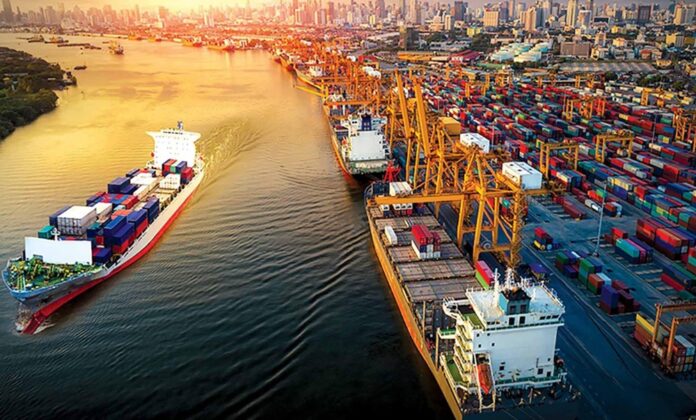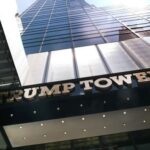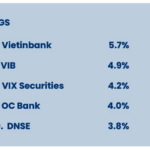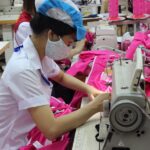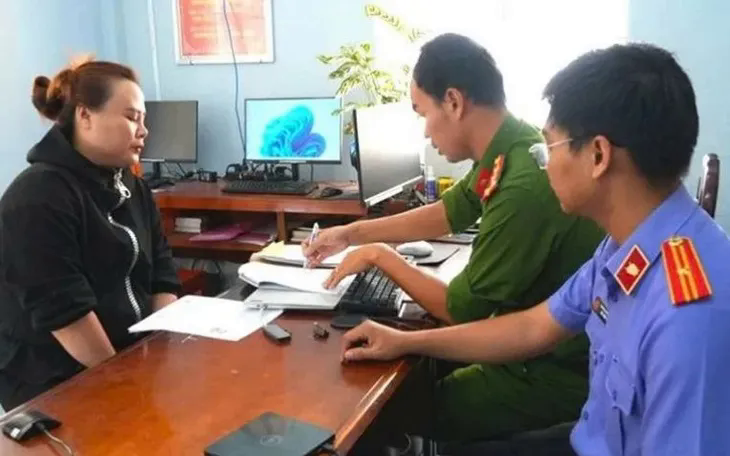The Vietnamese economy is showing promising signs of recovery and growth, as indicated in the report “Economic and Social Situation in May and the First Five Months of 2025” by the General Statistics Office (Ministry of Finance). Industrial production is rebounding, trade surplus is surging, tourism is bouncing back, businesses are thriving, and inflation is under control.
Industrial Recovery and Business Boom
According to the report, the index of industrial production (IIP) for the first five months of 2025 increased by 8.8% compared to the same period last year, outperforming the 7.1% growth rate in 2024. This is a positive sign after the pandemic, indicating that the production sector is regaining its strong growth trajectory.
In the services sector, international arrivals in May reached 1.53 million, a 10.5% increase compared to the previous year, despite a 7.6% dip from the previous month. Cumulatively, Vietnam welcomed 9.2 million international visitors in the first five months, representing a 21.3% surge. Revenue from accommodation and catering services increased by 15.2%, while travel services revenue climbed by 24.7%. Major cities like Ho Chi Minh City (30.4%), Hanoi (22%), and Da Nang (19.9%) witnessed significant growth, reflecting the success of the government’s tourism recovery strategies.
Moreover, trade continues to be a key driver and a bright spot in the economy. The total trade turnover in the first five months reached USD 355.79 billion, a 15.7% increase. Exports amounted to USD 180.23 billion, a 14% rise, while imports reached USD 175.56 billion, a 17.5% jump, resulting in a trade surplus of USD 4.67 billion.
Notably, the export sector is heavily reliant on foreign direct investment (FDI) companies, which contribute over 72%, while domestic enterprises account for only 27-28%. This, according to economic experts, is both a strength and a challenge as Vietnam aims to enhance the capabilities of local businesses in the global value chain.
Another notable highlight in the first five months is the strong support from both public investment and foreign investment. Public investment capital reached VND 221.8 trillion, a 17.5% increase, a significant leap from the 3.9% growth rate in the same period last year, reflecting the government’s efforts to accelerate disbursement and boost infrastructure development. In terms of foreign investment attraction, Vietnam continues to impress with a total registered FDI capital of USD 18.39 billion, a remarkable 51.2% increase. Additionally, adjusted capital surged to USD 8.52 billion, triple the amount from the previous year, demonstrating investors’ growing confidence in Vietnam’s investment environment.
The business sector also showed positive signals, with 66,800 newly established enterprises in the first five months, creating 453,900 new jobs, representing a 0.6% increase in the number of enterprises and a 6.2% rise in employment compared to the same period. Furthermore, 45,000 businesses resumed operations, bringing the total number of newly registered and returning businesses to 111,800, an 11.3% increase.

Reducing reliance on FDI for exports is crucial to strengthening Vietnam’s economy.
Dr. Nguyen Minh Phong, an economic expert, affirms that the economic picture for the first five months of 2025 is promising, with robust recoveries in industry and services, surging trade figures, a resurgence in business activities, and macroeconomic stability. This solid foundation positions Vietnam to achieve higher growth targets for the year.
Sharing the same viewpoint, Dr. Mac Quoc Anh, Vice Chairman of the Hanoi Association of Small and Medium Enterprises, acknowledges the challenges and risks ahead but believes that the economy is heading in the right direction amid global uncertainties. The stable macroeconomic environment and positive investment flows are paving the way for growth in the latter half of the year.
Urgent Need to Strengthen Vietnamese Businesses
Looking ahead to the second half of 2025, economic experts predict that Vietnam will continue to witness a strong performance in industry and trade. “The manufacturing sector, exports, and global demand recovery will continue to drive economic growth,” says Dr. Nguyen Minh Phong.
Additionally, experts predict that inflation will be kept in check in the latter half of the year, with CPI rising moderately. Robust FDI attraction and public investment disbursement will help offset the decline in services following social distancing measures. In the first five months, CPI rose by only 3.21%, but fuel and public service prices may increase towards the year’s end. Keeping CPI below 4% requires close coordination between fiscal and monetary policies. Strategic adjustments in the pricing of essential commodities like electricity, gasoline, and tuition fees should be carefully planned to avoid price shocks. Ensuring stable supplies of food and commodities is also crucial.
Economic growth should not only focus on quantity but also on quality. This calls for substantial institutional reforms, digitization of public services, reducing compliance costs for businesses, and enhancing labor productivity. The digital economy, encompassing e-commerce, fintech, and artificial intelligence, should be positioned as a new growth engine.
Notably, Dr. Phong emphasizes the need to reduce reliance on FDI for exports and strengthen the capabilities of domestic enterprises in terms of production, quality, and integration into global value chains. “To sustain this momentum, it is essential to promote technology transfer to local businesses, attract high-quality FDI, improve the business environment, and manage inflation effectively,” he adds.
Dr. Mac Quoc Anh underscores the importance of substantive support for small and medium-sized enterprises in the coming months, particularly in accessing credit, loan guarantee funds, tax incentives, and digital transformation. Given the ongoing global economic uncertainties, government intervention is necessary to solidify traditional markets and expand export opportunities for businesses.
The KBC Shareholders Decide the Fate of the $1.5 Billion Mega-Project with the Trump Organization.
The Kinh Bac Urban Development Corporation is set to contribute capital and collaborate with Hung Yen Company through investment, joint ventures, and business partnerships. This strategic move will facilitate the implementation of the Hung Yen Project, with the former’s expertise and resources bolstering the latter’s capabilities.
The Trump Organization’s Entry into Vietnam: A Game-changer for Hung Yen’s Investment Landscape
In just the first five months of 2025, Hung Yen province has attracted nearly USD 4.5 billion in domestic and foreign direct investment. This record-breaking achievement is attributed to the influx of billion-dollar mega-urban projects investing in the province.
“Surplus Trade Surges in Dong Nai: Over $3.2 Billion in the First Five Months of 2025”
“In the first five months of 2025, Dong Nai’s economy continued its positive growth trajectory with several notable highlights. The province’s trade impresses with an estimated turnover of 18.39 billion USD, boasting a trade surplus of 3.23 billion USD. Dong Nai maintains its position as a leading locality in terms of trade surplus, showcasing its robust economic performance and potential.”
The Binh Duong Shop House Market: A Window of Opportunity Before the Ring Road 3 Opens?
With an estimated GRDP growth rate of 7.5% in 2024, an urbanization rate surpassing 85%, and a robust FDI recovery, the positive economic indicators are transforming the real estate market surrounding the VSIP II industrial park into a focal point. The dwindling availability of clean land further accentuates the appeal of this area, making it a prime destination for investors and developers alike.

